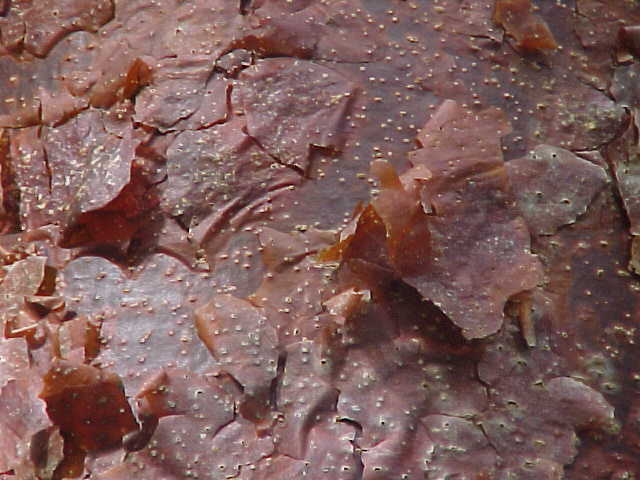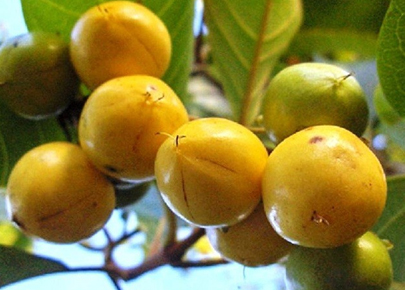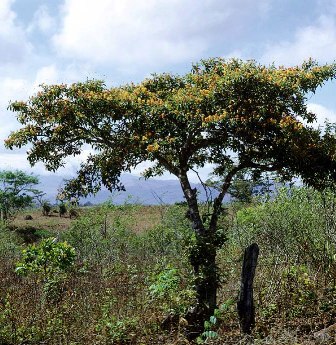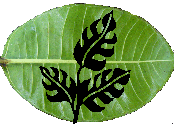|

Medicinal Plant
































Native shamans, Curenderos and even the local people are living encyclopedias of knowledge on how to prepare plants to treat a wide range of ailments. Much of the information needed to identify all of the plants has been lost forever with the passed Shamans who didn't pass their knowledge on the the next generation and therefore, not recorded. Although there are millions of varieties of plants in this area, it will take years to encompass all of it so this is but a few of what just this small area of rainforest has to offer.
The ancient Mayan culture was advanced in many ways. Medicine was another area we are learning that this applies. Click here to learn more.
Indigenous people from the rainforest use hundreds of plant species for medicinal purposes. The local marketplace in any village has examples of these medicinal herbs. To see and learn about even more click here.
Virtually every disease is treatable with one or more plants, although with varying effectiveness.
Some species are already valuable additions to western medicine. For example, Chondrodendron
is a vine used to prepare curare. Its active ingredient provides a drug used in surgery and to
treat epilepsy and tetanus. Other species are under intense scrutiny by western pharmaceutical
companies for their potential as commercial drugs.
The information that I have researched are located on the left side of the page. One of the best resources I have found on medicinal plants is by Dr. Leslie Taylor at Rain-Tree Nutrition. Unfortunately, her information is copyrighted so where I had earlier borrowed and customized the information to the area on this website, it is no longer avalaible the way I rewrote it adding the local applications. Those links that apply to the rainforest that are in this area of Guatemela go directly to her website. SO you will need to use the "back" button on the top of your browser to return to the "Did You See That?" website after reading her information on the said medicinal plants. Sorry for the inconvenience.
Another important point to consider is that with recent climate changes, migration insects that feed on molds and funguses that appear on plants and trees which result in maintaining the health of the plant are changing along with the variances of rain cycles. Then the birds that normally cycle down in time to prevent those insects from causing to much damage are not altering migration which allows the insects to overpopulate and damage normal food and medicine sources. This is causing either plants and trees to die, or to evolve natural toxins similar to antibodies that can fight of these changes. These are the unexplored chemicals that could potentially lead to our cure for cancer or AIDS.
Click on any of the pictures and they will lead you to a brief description. The picture at the description, will then lead you to more extensive reasearch on that particular plant.

(Abrus precatorius)
This plant is a slender twiner with alternately placed compound leaves. Each leaf has about 20 pairs of narrow, oblong leaflets, looking like a delicate feather. Seeds are extremely poisonous if cracked; a single one, if swallowed can be fatal.
 (Gossypium hirsutum)
(Gossypium hirsutum)
This unusual looking relative of the hibiscus plant is known best for the fluffy contents of its seed pods which can be made into a variety of cotton products. It is the most widely planted species of cotton in the United States, constituting some 95% of all cotton production. Medicinally it is beneficial for conditions affecting the respiratory and digestive system. The mucilaginous tea of fresh or roasted seeds is used for bronchitis, diarrhea, dysentery, and hemorrhage. Flowers are used to promote urination and moisten the skin. The root decoction is used for asthma, diarrhea, and dysentery. Cotton seed and roots have been used in treating nasal polyps, uterine fibroids and other types of cancer. Its main active ingredient, gossypol, has shown anticancer activity and is being used in China as a male contraceptive. Leaves steeped in vinegar are applied to the forehead for headache.


Achiote (Bixa orellana)
The medicinal applications of the Annato are made from the seeds, leaves and sap. Click on the picture for more in-depth information.
Culinary uses range from regional Latin American specialities to global commercial applications. Mixed to a paste (recado) with garlic, onion, citrus and other herbs and spices, the seeds are used as a baste or marinade for grilled meats in traditional cuisine of Mexico’s Yucatan peninsula. Similar mixtures are used to colour and flavour stews in other parts of Central and South America. The natural food colouring is widely added to cheeses, margarine, rice and custard powder. Colouring of cosmetics such as lipstick has given the plant its common name.
The original Aztec drinking chocolate (see also vanilla) is
reported to have contained annatto seeds as well; given their
high fat content, this is entirely plausible. Using annatto to
deepen the color of chocolate was common in Europe until the
17.th century; today, the spice has little if any significance
and is used occasionally to give butter and cheese a deep yellow
color.
 (Adiantum capillus-veneris)
(Adiantum capillus-veneris)
Avenca Known as Maidenhair fern in most plant stores, this fern is found in most moist forests around the world. Click on the picture to see what this little fern can REALLY do!
 (Musa sapientum)
(Musa sapientum)
This is a fascinating plant with an incredible history. Click on the image to the left to learn just how beneficial bananas are.

 Candle-bush
(Senna alata)
Cassia Bor Senna alata is often called the Ringworm Bush because of its very effective fungicidal properties, for treating ringworm and other fungal infections of the skin. The leaves are ground in a mortar to obtain a kind of "green cotton wool". This is mixed with the same amount of vegetable oil then rubbed on the affected area 2-3 times a day. A fresh preparation is made every day. Its active ingredients include the yellow chrysophanic acid.
Its laxative effect, due to its anthraquinone content, is also well proven.
 (Cnidoscolus aconitifolius)
(Cnidoscolus aconitifolius)
One of the many plants used by the Maya as well as many other cultures to cure diseases was Chaya. Locally called "Chachate", it's also called " Mexican spinach tree " is a shrub, much appreciated for its edible leaves, especially in Mexico. Its leaves are intended for food, and are used as spinach, but also have amazing medicinal properties.
 (Salvia hispanica)
(Salvia hispanica)
Chia seed is an ancient Mayan staple obtained from the Mexican native chia plant or Salvia hispanica, named after the Mayan word “strength.” This modern super food was aptly named since the seeds were known by several indigenous peoples to promote endurance. In fact, chia seed was often the only source of nutrition consumed by the ancient Aztecs and southwestern tribes of the U.S. while traveling great distances. Domesticated in the valley of Mexico as early as 2,700 B.C., chia seeds served as a primary staple food of the Nahuatl (Aztec), Mayan, Incan and other indigenous peoples. Of their many crops, four had significant nutritional benefits: these were amaranth, beans, corn and chia.

 Cacao (Theobroma cacao)
Pronounced (cucow) or better known as the source for chocolate, the cocoa tree produces over 150 different chemicals in its leaves, fruit, seeds and bark. Medicinal use of the cocoa plant dates back thousands of years to the Olmec, Mayan and Aztec civilizations. Cacao is one of nature's richest sources of magnesium, which is a heart as well as brain mineral. Cacao is also a great source of serotonin,
dopamine, and phenylethylamine, three well-studied neurotransmitters, which help alleviate depression and are associated with feelings of well being. Cacao
contains monoamine oxidase inhibitors (MAO Inhibitors) that improve our mood because they allow serotonin and dopamine to remain in the bloodstream longer
without being broken down. Cacao contains anandamide which delivers blissful feelings. Cacao also contains B vitamins, which are associated with brain
health. All this makes cacao a natural prozac!
The Cacao Tree grows in the shade, reaching a height of between 3 and 8 meters. It starts to bear fruit after 4 or 5 years. Its
leaves, which look like chestnut tree leaves, remain on the
tree all year round. It has small, white flowers which blossom
for most of the year. Flowers, leaves and fruit are all to be
found together on the tree all year. The fruit is harvested
twice a year. The "pods" (fruit of the cacao tree) are of a yellowish orange color measuring about 25cm long and 15cm wide
and weighing 500g. Each pod contains between 20 and 50 seeds. Harvesting begins when the tree reaches maturity and involves
several stages. The pods are picked and then opened. The seeds
are extracted and left to ferment for 2 to 7 days, after which
they are dried. It is once the drying process is complete that
they are called cocoa beans.

 Canahuate(Costus specious)
A strange plant from Central America with spiraling stalks that leaves only grow on the outside of the spiral grow up to 6 ft. tall and
pretty 4" flowers. Normally found in the rainforest canopy which is believed to be the reason that the leaves are on the outside of the stems (to maximize the amount of sun it can get). The plants bear a fruit that attracts birds. The stems are squeezed to make a tasty
juice that is used for kidney ailments.


Cancer Herb (Acalypha aryensis )
Hierba Del Cancer is not a well researched medicinal plant, but one with remarkable results for chronic skin problems.


Cancerillo (Asclepias Curassivica)
Cancerillo although it can be used medicinally, it IS poisionous! Butterflies love it for its
pollen and that it makes them toxic for predators. It should only be used by people who have experience using it. Click on photo for more details.


Cat's Claw(Uncaria tomentosa)
If any plant deserves to be called a panacea it is cat's claw, or una de gato. This vine is named for its sharp, curved spines. The bark is used to
treat a wide range of ailments including ulcers, gastritis, arthritis, asthma, diabetes,
Alzheimer's and PMS. It is effective against tumors and is being studied for its effectiveness in
treating certain AIDS-related symptoms.


Cinnamon (Cinnamomum verum)
Cinnamon bark is widely used as a spice for cooking. For cultivation, a tree is grown for two years and the it is coppiced. The next year a dozen of so shoots will form from the roots. These shoots are then stripped of their bark and left to dry. Only the thin inner bark is used; the outer woody portion is removed, leaving
meter long cinnamon strips which curl into rolls on drying.


Coconut tree (cocos nucifera)
An easy to grow palm in almost any conditions. The coconut, juice and oil are highly medicinal as well as tasty. A renewable resource that provides medicinal properties and much more.


Huevos de Chucho (Thevetia ahouai)
A small three or shrub, growing up to eight meters in height with a smooth greyish bark and small bright red berrys resembling testicles.


Ixcanan (Hamelia patens)
This shrub is used to treat skin irritations, menstrual cramps, and insect bites. If bit by the notorious tabano, or doctor fly, the swift application of crushed leaves to the area will provide relief.


Lemon Grass (Cymbopogon citratus)
Lemongrass is drunk before bed to induce sleep. The infusion is also used to loosen and lessen mucous, to treat fevers, cramps, and stress. The essential oil is used as a food flavoring and an ingredient in cosmetics, perfumes and insect repellents. The oil also has antibacterial properties.


Mango (Mangifera indica)
The plant is found abundantly throughout England, on hedge-banks and the sides of fields, in dry thickets and on all waste places. In Scotland it is much more local and does not penetrate very far northward.
Agrimony has an old reputation as a popular, domestic medicinal herb, being a simple well known to all country-folk. It belongs to the Rose order of plants, and its slender spikes of yellow flowers, which are in bloom from June to early September, and the singularly beautiful form of its much-cut-into leaves, make it one of the most graceful of our smaller herbs.
A fast growing perennial to 3-5 feet tall with yellow flowers on long slender spikes. Grows in zones 3-8. Taken as a tea, it is useful for liver, kidney and bladder problems. It is also a healing herb for mucous membranes and it's astringent properties help stop bleeding. The plant also produces a yellow/gold dye.

 Moringa(Moringa oleifera)
This is an interesting plant and every part of the Moringa is used. This includes the bark, the flowers, seeds, fruits, leaves and root. In Asia and Africa, Moringa is used to fight malnutrition since the leaves and seeds can be cooked. The wonders of the Moringa plant are immense, and this can be credited to its mineral, protein and vitamin properties which make it a great antioxidant.

 Nance(Byrsonima crassifolia)
The nance's yellowish skin of the fruit surrounds a code that is simply packed with vitamins and minerals. The juicy pulp of the fruit harbors an abundance of nutrients such as vitamin C, Vitamin E and vitamin K. There is also a large presence of riboflavin, thiamine, pantothenic acid, niacin, folate and manganese in the power packed bulbs. Nance fruit is shaped like a small sphere and has a very aromatic scent that does not compare to other fruits you may know. The taste of the fruit ranges from sweet to sour. You always know when a nance fruit is ripe, when it turns from green to striking yellow. Nance fruit is a great home remedy for a number of ailments. Here are a few: The fibrous fruit is used to treat constipation. The folate in the fruit also helps treat depression. Nance fruit improves memory and can help deter memory loss. Wounds and rashes can also be treated with the bark. Nance is used locally in the communities where it is popular to address wheezing and other pulmonary diseases. The fruit helps relieve both fatigue and aching bones. Nance fruit helps create red blood cells and antibodies as well as lowering blood pressure. Teeth and bones can be strengthened by using the fruit. Finally the fruit helps to reinforce the cardiac system.

 Neem(Azadirachta indica)
A miracle cure for many ailements, you will also see it used as fence posts as it is so easily propogated it is considered an invasive tree.

 Papaya(Carica papaya)
(Papaya) The papaya is a short-lived, quick-growing, soft-wooded tree that has never been found in the wild. They have been known to be hermaphroditic and able to
pollinate themselves. Interestingly, both male and hermaphroditic trees (but never females) can undergo sex reversal; the type of flower produced on one tree apparently depends on age, season, and probably other variables as well. In any case, the sex of a tree can not be determined until flowering starts.

 Passionfruit(Passiflora incarnata)
There are several species of these beautiful vines.


PeriwinkleVinca minor
A member of the Dogbane family and poisonous if used incorrectly, the Rosy Periwinkle is one of the most important plants medicinally. This plant alone generates hundreds of millions per year in the pharmaceutical industry for cancer treatments. Externally it can be used for wasp stings and stop bleeding. To learn more click on the image to the left.


Pineapple(Ananas comosos)
In 1493, Columbus came across the pineapple on the island of Guadeloupe. The natives who cultivated these fruits called them ananas and believed that they had been brought from the Amazon many generations earlier by the warlike Caribs. (This oral history may be true, as pineapple-shaped jars have been found in pre-Incan burial sites in Brazil.)
A few explorers had observed that Indians used pineapple poultices to reduce inflammation in wounds and other skin injuries. Native people also drank the juice to aid digestion and to cure stomach ache. In 1891 an enzyme that broke down proteins (bromelain) was isolated from the flesh of the pineapple, accounting for many of the pineapple's healing properties. It has been found that bromelain can also break down blood clots, which consist mainly of protein. Pineapple juice works well as a meat marinade to tenderize tough meats because of the properties of bromelain. Research continues. This enzyme may well play a major part in heart attack treatment in the near future, as well as in the treatment of burned tissue, abscesses, and ulcers.


Sangre de Grado
(Croton lechleri)
A magical tree in its medicinal properties as well as in Mayan Mythology of the Hero Twins in the Popol Wu. Click on the image to the left for medicinal properties. The therapeutic properties of Dragon's blood includes the following: anesthetic, anti-allergic, anti-inflammatory, antibacterial, anti-dysenteric, antifungal, anti-hemorrhagic (reduce bleeding), anti-leukemia, antioxidant, antiseptic, anti-tumor, antiviral, neurasthenic (reduce nerve pain) and wound healer and also includes analgesic (pain-reliever), anti-cancerous, anti-itch, anti-ulcerous and astringent properties.


Santa Maria Plant(Piper peltatum L.)
Beautiful big leaves and a group of strange looking stamens mark this plant that is related to the pepper plant. Highly respected as a medicine plant for its ability to relieve pain (muscle spasm and pain, headache, and stomachache)


Sleeper(Mimosa pudica)
A fascinating little plant that has medicinal properties but is not for the
amateur. Locally, the experts have informed me that it is good for kidney problems but I have yet to
verify this. Click on the image for more information.

 Sorosi (Momordica charantia L. )
A strange little vine that grows along the sides of fields provides a tonic to treat and prevent intestinal parasites, amoebas, anemia, tiredness, constipation, delayed menses and skin problems.

 Tourist Tree Tourist Tree
(Bursera simaruba)
Also known as the Naked Indian, Gumbo-limbo or Turpentine tree, the berries are sought by fruit eating birds. The bark has a grayish resin which tastes like turpentine. The bark, gum, and leaves are much esteemed as home remedies. The resinous gum has been used as incense, adhesives for broken dishes, as a protective covering on canoes, and to repel insects and worms.

 Tamarind(Tamarindus indica L.)
It is a tropical tree, native to eastern Africa, including parts of the Madagascar dry deciduous forests. It grows wild throughout the Sudan but has now been introduced into tropical Asia, Australia, Latin America and the Caribbean.
 (Neurolaena Lobata)
Tres Puntas, jack-Ass-Bitters or Mano de Lagarto Tres puntas (Neurolaena Lobata) is member of the Asteraceae family and a common Central American plant widely used in traditional medicine. It also called Jack-Ass-bitters, Mano de lagarto (due to 'male' leaves looking like a crocodile's hand), gavilana , capitana , contragavilana , inaciabi , zeb-a-pique , herbe-a-pique, cow-gall bitter. It grows 1 to 2 m tall mostly close to water bodies or small reservoirs; it has alternate trilobed leaves and yellow flowers.
(Neurolaena Lobata)
Tres Puntas, jack-Ass-Bitters or Mano de Lagarto Tres puntas (Neurolaena Lobata) is member of the Asteraceae family and a common Central American plant widely used in traditional medicine. It also called Jack-Ass-bitters, Mano de lagarto (due to 'male' leaves looking like a crocodile's hand), gavilana , capitana , contragavilana , inaciabi , zeb-a-pique , herbe-a-pique, cow-gall bitter. It grows 1 to 2 m tall mostly close to water bodies or small reservoirs; it has alternate trilobed leaves and yellow flowers.
The plant bitter-tasting leaves contain a potent anti-parasitic agent (sesquiterpene dialdehyde) active against intestinal parasites like amoebas, giardia. It is used to treat candida, malaria, dengue, fungus, ringworm etc. The weedy Neurolaena obata plant was used to treat cancer, diabetes, hypertension, and hepatic ailments, it is used as an insect repellent, insecticide, to treat skin diseases, gastric pain, ulcers, as a general pain reliever and to treat anemia and nervous weakness. It also has been used as a tonic and an antipyretic. A tea made from the root is used to cleanse the blood and regulates blood sugar levels. It can ultimately help diabetics manage their condition. It is also used as a hair wash for ridding the lice. Should be avoided use during pregnancy.



|
|

































 Algodón
Algodón
 Banana
Banana
 Chia
Chia












 Tourist Tree
Tourist Tree
 Tres Puntas
Tres Puntas
